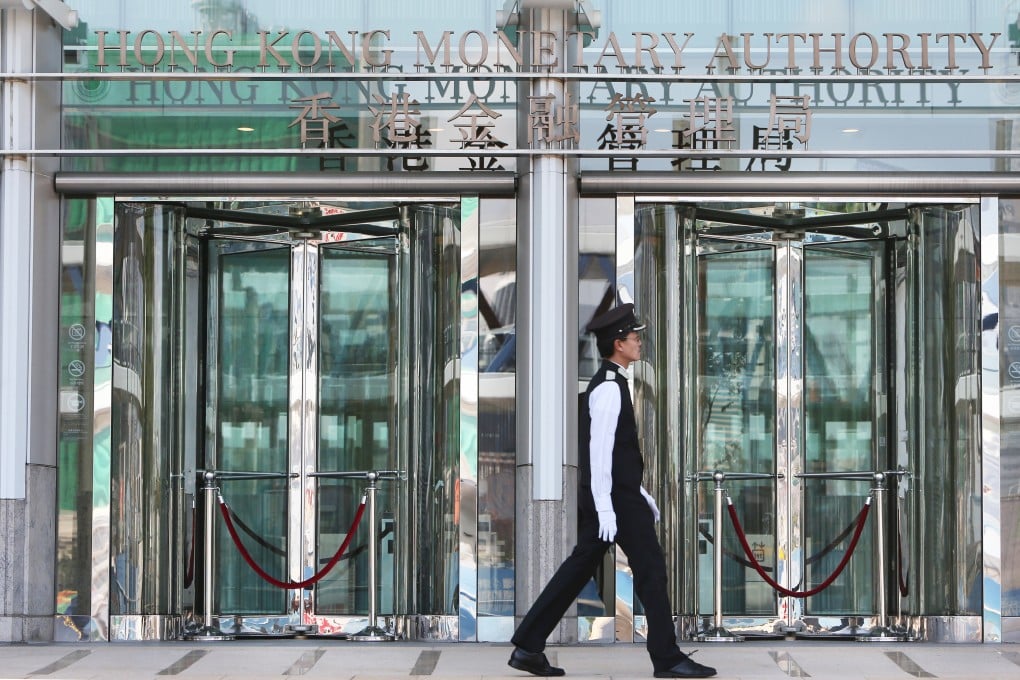Hong Kong defends local dollar in first currency intervention in 18 months, as capital flows out in pursuit of higher US yields
- The HKMA bought a combined US$722 million worth of Hong Kong dollars in two interventions on Thursday
- Such a trend will gradually push interest rates up, including mortgage rates in Hong Kong, ANZ executive says

Hong Kong’s monetary authority stepped into the currency markets again on Thursday afternoon to support the local dollar, marking its second intervention in a single day to support the currency.
The two interventions worth a total of HK$5.668 billion (US$722 million), the first such action in 18 months, came as rising US interest rates attract arbitrageurs, leading to capital outflows from the city.
The de facto central bank bought HK$4.082 billion (US$520 million) on Thursday afternoon, after it bought HK$1.586 billion (US$202 million) in the morning to bolster the exchange rate and return it to its trading band, after it briefly weakened to HK$7.8500 per US dollar. The band, in place since 2005, allows the Hong Kong dollar to fluctuate between HK$7.7500 and HK$7.8500 per dollar.
The interventions will reduce the aggregate balance – the sum of balances in clearing accounts maintained by banks with the monetary authority – to HK$331.923 billion on May 16, according to data provided by the Hong Kong Monetary Authority (HKMA).
“The weakening of the Hong Kong dollar’s exchange rate was a result of the US interest rate rise, which has led to capital outflows from the city and other emerging markets,” Eddie Yue Wai-man, the HKMA’s CEO, said in a Legislative Council meeting on May 3, as he foreshadowed the impending intervention.
The interest rate gap between the US and Hong Kong widened to 66 basis points on May 10, from 3 basis points a year ago, as the one-month Hong Kong interbank offered rate (Hibor) remained at 0.17 per cent while the one-month US dollar London Interbank Offered Rate (Libor) stood at 0.83 per cent.